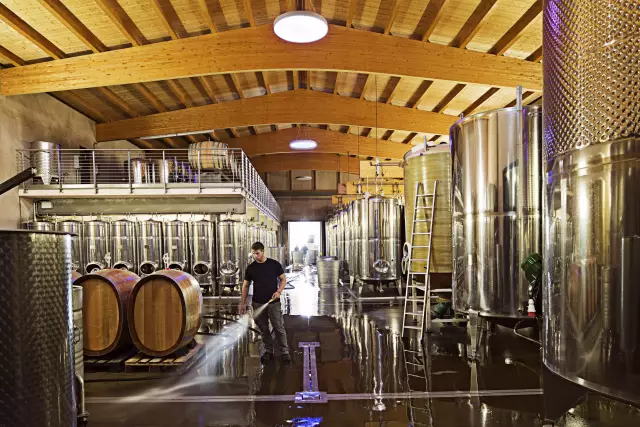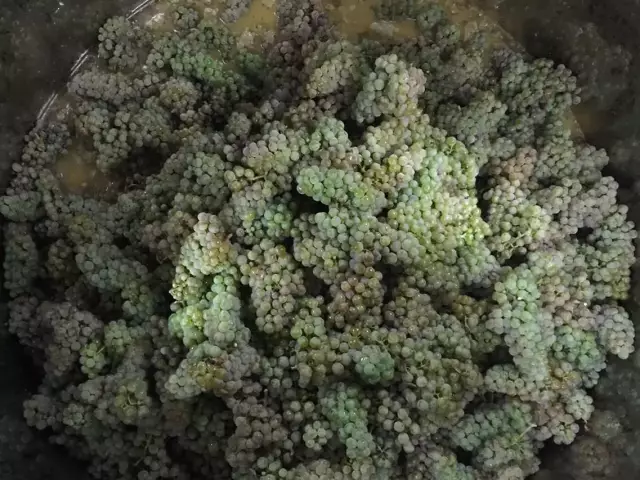History
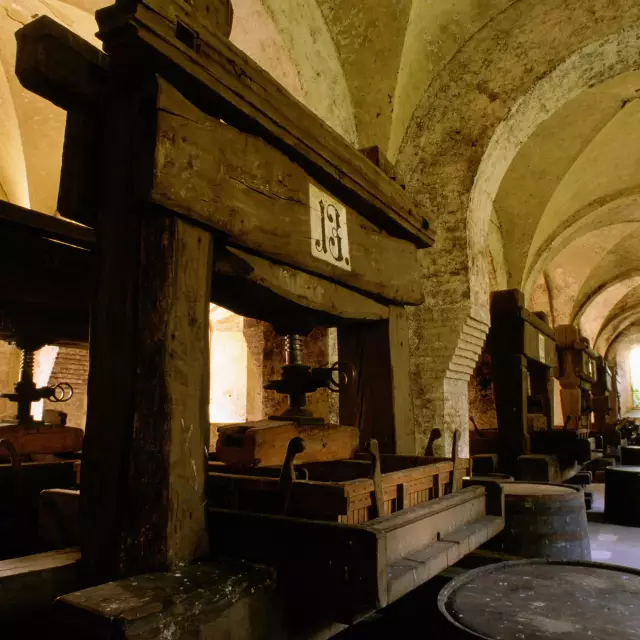
The vine is one of the oldest plants in the world. The Romans brought it to Germania more than 2,000 years ago.
Facts
-
2.000
years of viticulture
-
66
highlights of the wine culture
-
100 Mio.
years since the first wild vine
Wines of Germany - 2000 Year Tradition
Today's grape varieties evolved during a centuries-long process of selection. The wild vines that tasted best and seemed best-suited for winemaking were cultivated and ulimately developed into the species known as vitis vinifera. There is evidence that viticulture existed thousands of years before Christ, especially in the highly developed Middle Eastern civilizations that today correspond to modern Egypt, Iran or Israel. Grapes were also cultivated in Greece and Italy during the pre-Christian era. In Asia Minor, Dionysus was worshipped as the god of wine; Bacchus was his Roman counterpart.
In the course of their conquests north of the Alps some 2,000 years ago, the Romans - who adopted viticulture from the Greeks and Etruscans - introduced viticulture to the Germanic territories. It would have been cumbersome to transport the wine across the Alps in heavy amphorae, so they brought the vines instead and planted them in suitable areas. Even then, these “Nordic” wines were seemingly fresher and more diverse in taste than their southern predecessors.
In the 8th century, Charlemagne regulated viticulture, winemaking as well as wine-related commerce. Above all, the monasteries were centers of wine culture and wine the predominant drink, serving as a replacement for the frequently polluted drinking water. Documents show that vineyards existed in nearly all of Germany during the Middle Ages. However, due to climatic changes, improved methods of brewing beer and increased imports of wine, the area under vine continually decreased after 1500.
The church’s dominance over wine-growing was abolished by the conquests of Napoleon in the areas left of the Rhine. Fortunately, the new vineyard owners also attached great importance to quality and wines from the Rhine and Mosel achieved international success in England, Bohemia and Russia.
Many vineyards were still planted with several grape varieties side by side as late as the 19th century. This all practically came to a standstill however, when at the end of the 1800s, the vine louse phylloxera wreaked havoc on Europe’s vineyards. As a result, many indigenous grape varieties disappeared. Viticulture revived at the turn of the century with the introduction of grafting vines on phylloxera-resistant American rootstocks - a practice that was later made mandatory. Vine breeding and selection led to the standard grape varieties that are predominant in modern German viticulture.
Thanks to the close cooperation between research, science and winemakers, a number of innovations in vineyard and cellar technology have been implemented. This know-how has become an export hit as much as the wines themselves, and influences wine countries as far as South Africa, Australia, California or Chile. Innovation is the one thing that German wines have in particular. That may sound a bit theoretic or even technical, but without this ability, there would be no wonderful delights like Dornfelder or Kerner. Both varieties were not grown until 1955 or 1929 respectively, and have long since fought for a place alongside grape varieties such as Riesling or Pinot Noir.
To explore Germany’s wine history further, there are several wine museums in the different growing regions, for example, Speyer, Bernkastel-Kues on the Mosel and Oppenheim.
Ampelography means grape varietal science. From which Greek words is this composed?
The first part of the word - ampelos - describes the vine, while the second part - gráphein - is derived from the Greek verb for "to write".
Varietals

More recipe ideas
with semi-frozen goat's milk Lavender waffles
with semi-frozen goat's milk
- 2 Stück Eigelb
- 60 ml Ziegenmilch
- 500 Gramm weiße Kuvertüre
- 125 ml Sahne
- Abrieb und Saft einer halben Orange
- 2 cl Tresterbrand
- 8 Blatt Minze
- 125 Gramm Mehl
- 50 Gramm Zucker
- 70 Gramm Butter
- 2 Eier
- 1 Messerspitze Backpulver
- 1/2 EL Lavendelzucker
- 175 ml Milch
Semi-frozen goat's milk: Beat the egg yolks and goat's milk in a bowl over a hot bain-marie until creamy. Remove from the bain-marie and beat the cream until cold. Flavour with the zest of the orange and the marc brandy.
Liquefy the couverture in a bain-marie and stir into the lukewarm egg mixture. Whip the cream until stiff and carefully fold in. Line a parfait tin (triangular or gutter shape) with cling film. Pour in the mixture and smooth out. Cover well with cling film and leave to freeze in the freezer for at least 8 hours.
About 20 minutes before serving, remove the mould from the freezer and turn the parfait out of the mould. Remove the foil and cut the semi-frozen parfait into 8 slices.
<p
<p>Lavender wafers: Lightly mash the butter in a mixing bowl with a fork. Add the sugar and stir a little. Add half of the milk, the lavender sugar and the baking powder. Stir in the eggs and finally the rest of the milk. Mix everything well with a hand mixer for about 2 minutes to create a homogeneous, slightly liquid mixture. Bake the batter in batches in a waffle iron until golden brown.</p
<p>Arrange 2 slices of semifreddo on each waffle on a flat plate and decorate with mint leaves.
- Riesling (halbtrocken & feinherb)
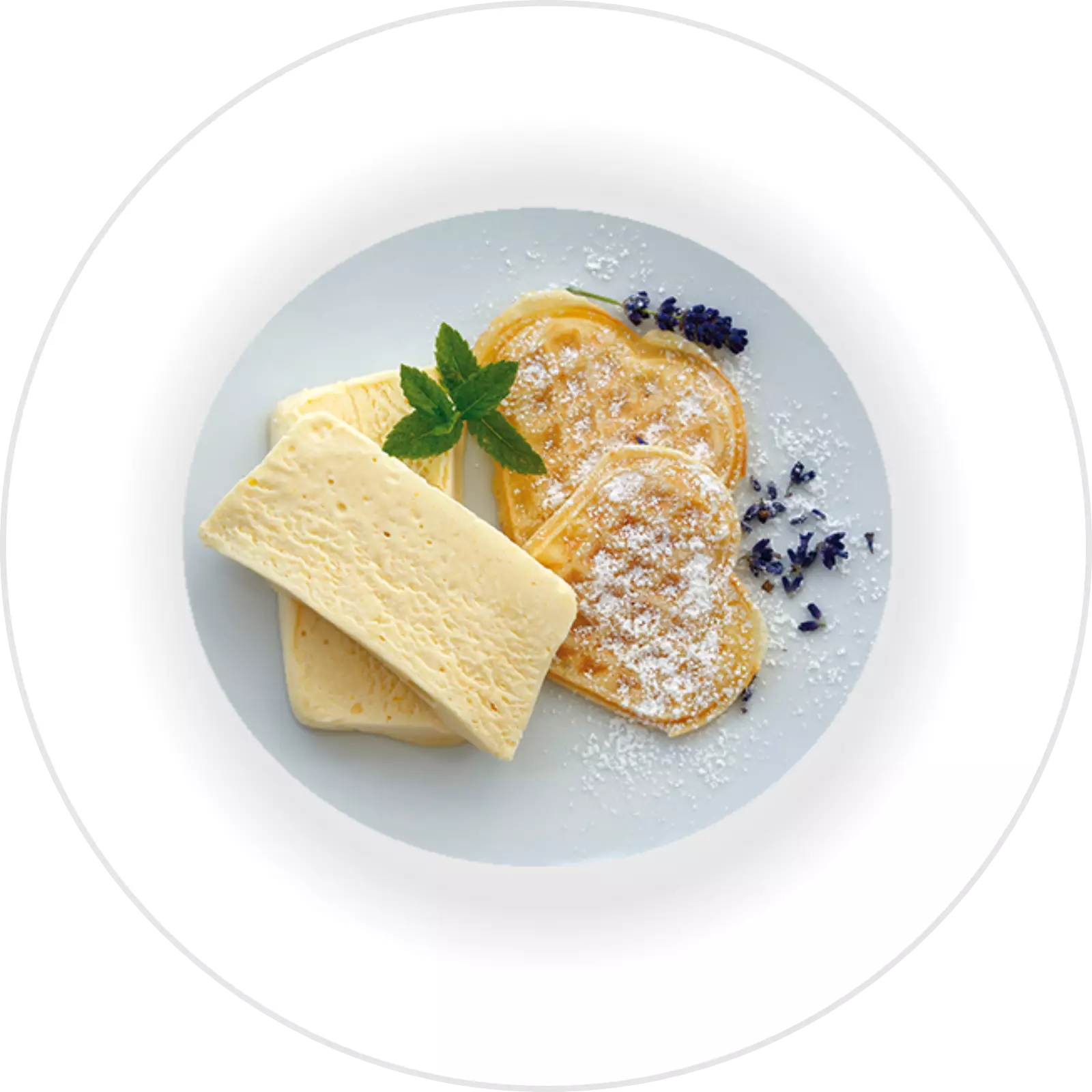
with goat's cheese Courgette and chanterelle salad
with goat's cheese
- 2 ganze Zucchini
- 3 EL Rapsöl
- 1 kleine Schalotte
- 300 Gramm Pfifferlinge
- 1 Msp. gemahlener Piment
- 2 Bund Rucola
- je 1/2 Bund Kerbel u. glatte Petersilie
- je 3 EL Walnuss- u. Rapsöl
- 4 Stück Ziegenkäse-Taler
- 1 Prise Zucker
- nach Belieben Salz & Pfeffer
Salad:
Wash the courgettes and slice thinly. Place in a bowl and mix with the oil.
Heat a grill pan and fry the courgettes in batches until golden brown. Season with salt and pepper, place in a bowl.
<p
<p>Peel and finely dice the shallot. Clean the chanterelles, wash if necessary and pat dry. Depending on size, cut in half if necessary.
<p
<p>Sauté the shallot in a pan until translucent. Add the chanterelles and fry vigorously for 3 minutes while stirring. Season with salt, pepper and allspice. Add to the courgettes. Wash the rocket and spin dry.
Dressing:
Wash the herbs, shake dry. Pluck the leaves, blend finely with both types of oil and vinegar in a blender or with a hand blender. Flavour with salt, pepper and sugar. Pour over the courgette and chanterelle mix and mix loosely with the rocket. Arrange on plates, sprinkle with goat's cheese.
- Pinot Blanc (trocken)
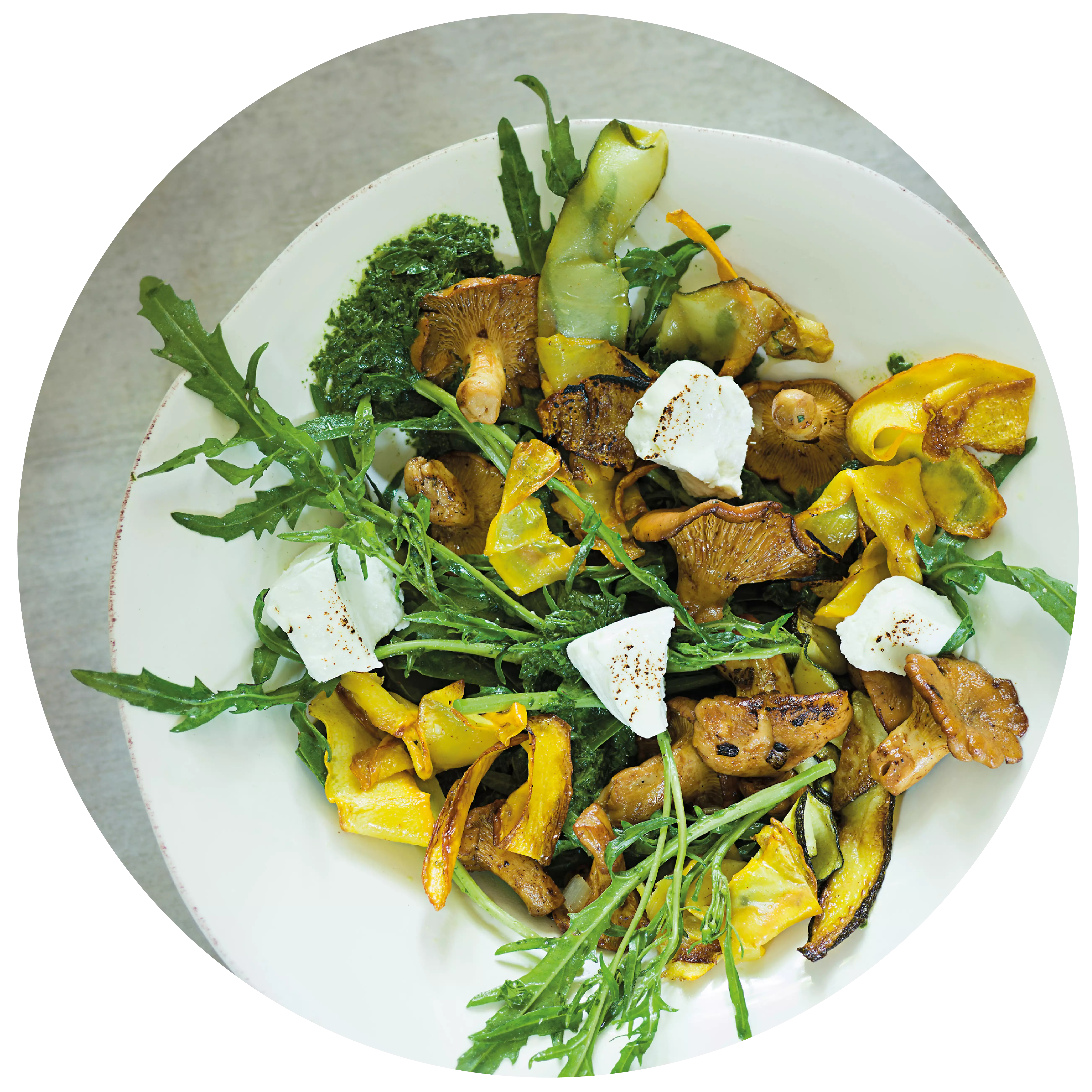
Asparagus harmonises perfectly with Silvaner Roasted asparagus with wild garlic and ribbon noodles
Roasted asparagus with wild garlic and ribbon noodles goes perfectly with Silvaner.
- 1kg weißer Spargel
- 1kg grüner Spargel
- 200g Butter
- 1 TL Zucker
- 2-4 EL Walnussöl
- 600g Tagliatelle
- 1 Prise Salz und Pfeffer
- 200 ml Schlagsahne
- 1 Spritzer Zitronensaft
- 8 Bärlauchblätter
Preparation:
Peel the asparagus (green asparagus only in the lower third), cut off the ends. Cut each spear in half lengthways and cut the halves in half. Cut the halves into 3 – 5 cm long pieces.
Heat the butter in a large pan, add the sugar. Caramelise briefly. Add the oil and asparagus and cook over a medium heat for approx. 10 mins. until al dente, tossing occasionally.
In the meantime, cook the tagliatelle in boiling salted water according to the pack instructions until al dente.
Pour the cream into the asparagus and reduce until creamy. Season the asparagus with salt, pepper and lemon juice.
Rinse the pasta, drain and mix with the asparagus. Cut the spring onions into strips and fold in.
Wine recommendation:
Silvaner Spätlese dry
- Silvaner (trocken)
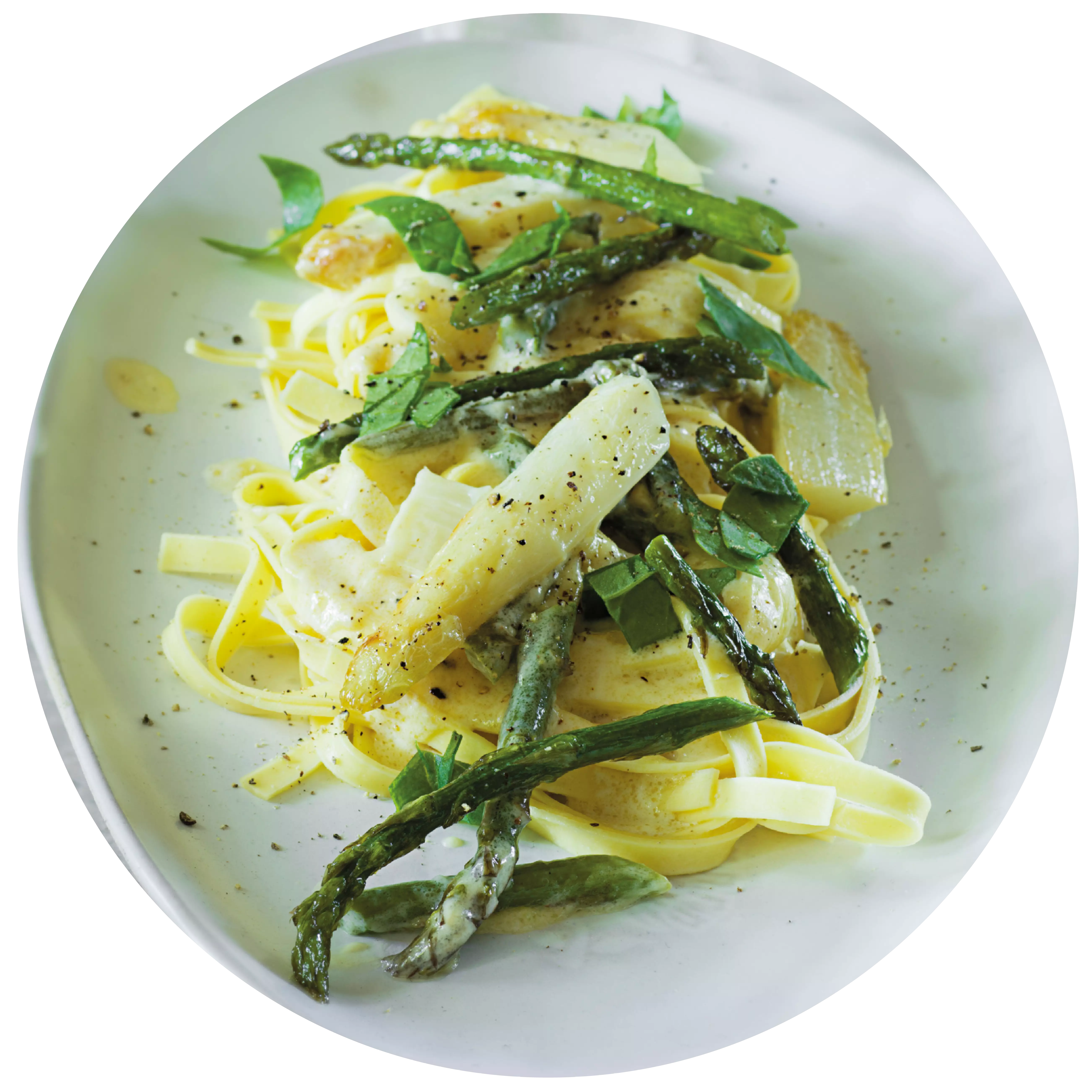
Japanese hollandaise succeeds with wasabi paste Salmon with Japanese hollandaise and green asparagus
Combine salmon with hollandaise and asparagus with a dry Riesling.
- 4x 150g Lachsfilet mit Haut
- 1 Limette
- 2 Zehen Knoblauch
- 4 EL Honig
- 10 EL Sojasauce
- 200g Butter
- 4 Eier
- 1 EL Joghurt
- 2 EL Reisessig
- 2 EL Wasabipaste
- 500 g Grüner Spargel
For the marinade, finely chop the garlic first. Wash the lime in hot water, grate the zest and squeeze out the juice and bring everything to the boil with the honey and soya sauce. Put to one side.
Now prepare the Japanese hollandaise: Bring 180g butter to the boil. Place the egg yolks, yoghurt, rice vinegar, wasabi paste and a pinch of salt in a tall measuring jug and mix with a hand blender. Gradually mix the boiling (!) butter into the egg yolks using a hand blender. Season the hollandaise with salt and pepper to taste and keep the measuring jug warm in hot water.
Peel the bottom third of 500 g green asparagus and cut off the ends. Melt 1 tbsp butter in a large pan. Add the asparagus to the pan, pour in 50 ml water and season with salt and pepper. Cover and bring to the boil briefly.
Fry the salmon fillets on the skin side in a little oil for about 4 minutes. Turn the salmon and fry for a further 2 minutes. Then turn again and baste with the marinade. Remove the salmon from the pan and reduce the marinade until thick. Brush the salmon with it. Serve the salmon with the hollandaise and asparagus. Enjoy your meal!
Wine recommendation:
WINE TIP: Dry Rielsing
- Riesling (trocken)
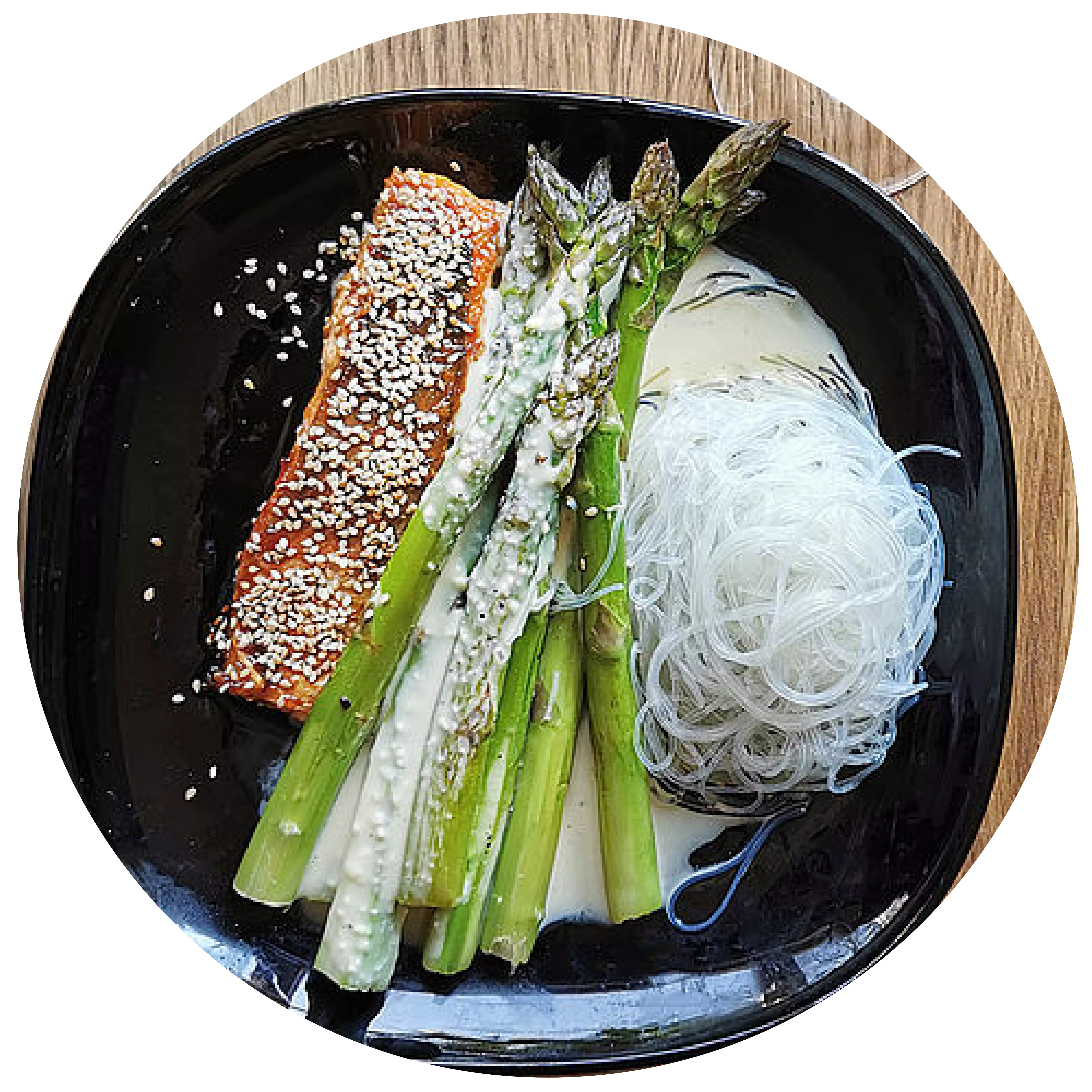
Events
-
Show
winetasting in our winery - blind tasting
Mainz-Hechtsheim


